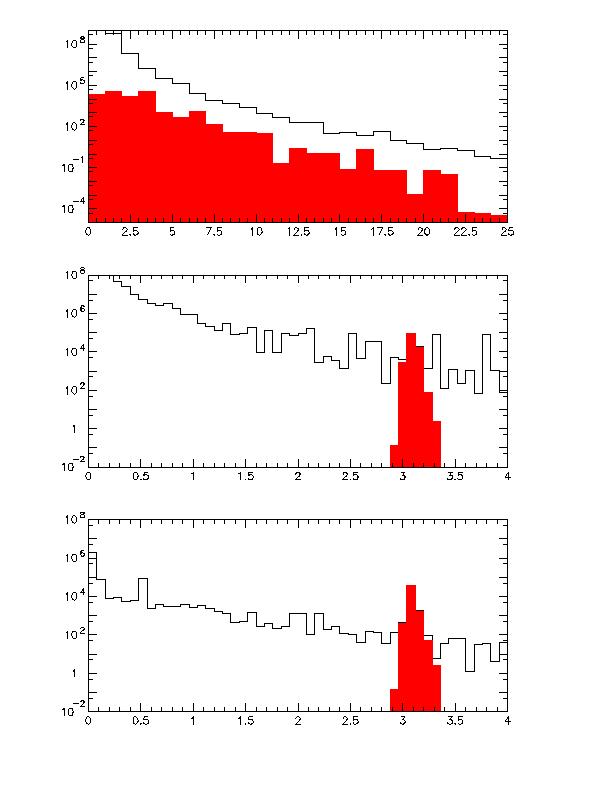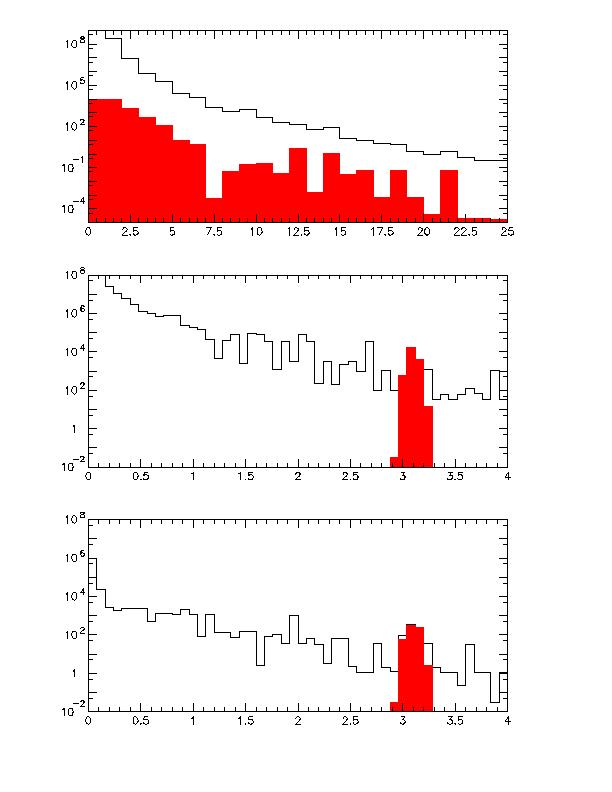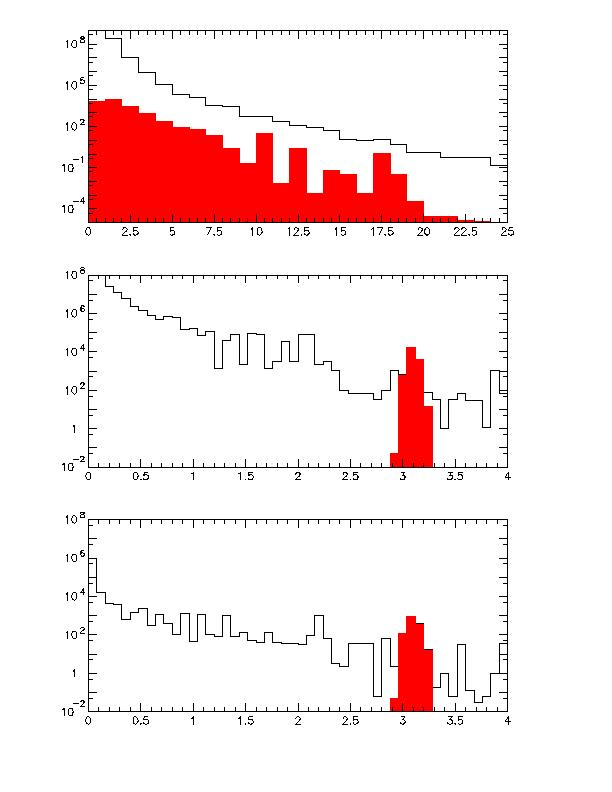Study of the J/Psi Detection at PHENIX for the pp Collision
PYTHIA generates direct production of J/Psi and higher-lying states,
chi_0c, chi_1c and chi_2c which subsequently decay to J/Psi.
To detect J/Psi, e+e- channel was considered.
At the low momentum region, momenta of e+ and e- are determined by the
tracking system.
I assumed momentum resolution of 0.855*(momentum[GeV/c])^-0.774[%],
which gives 0.5% at momentum of 0.5GeV/c and 2% at 3GeV/c.
For momentum less than 0.5GeV/c, I used fixed value, 0.5%.
At the high momentum region, momenta of e+ and e- are determined by the
EMCal energy resolution, 1.4+7.8/sqrt(energy[GeV])[%].
To detect e+ and e-, I didn't consider momentum kick by the magnetic
field.
J/Psi yield for full acceptance and four options and summarized on the
next table.
| p_T range | 2-3GeV/c | 3-4GeV/c | 4-5GeV/c | 5-6GeV/c | 6-7GeV/c | 7-8GeV/c |
|---|
| full acceptance | 12268 | 3793 | 1124 | 434 | 166 | 68 |
|---|
| acceptance 1 | 2179 | 477 | 120 | 12 | 6 | 1 |
|---|
| acceptance 2 | 2827 | 612 | 73 | 32 | 6 | 1 |
|---|
| acceptance 3 | 3149 | 844 | 266 | 129 | 32 | 13 |
|---|
| acceptance 4 | 3015 | 923 | 230 | 101 | 35 | 24 |
|---|
Acceptance option 3 and 4 keep 1/4 yield of the full acceptance, because
it can detect large angle e+e- decay of the J/Psi.
Acceptance option 1 and 2 are worse than acceptance option 3 and 4 from
the view point of the J/Psi detection.
I am also trying background study of the J/Psi detection.
Background was generated by the QCD jet process in the PYTHIA.
All e+ and e- were combined and p_T and invariant mass were calculated.
Figures below show;
- e+e- pair p_T spectrum
- e+e- invariant mass
- e+e- invariant mass for p_T>3GeV/c pairs
for full acceptance and options 1 and 4.
Red parts show contribution from J/Psi.
Currently, mis-identification of hadrons (mainly pi+ and pi-) are not
considered as the background.
- full acceptance

- acceptance 1

- acceptance 4

Go to Study of PHENIX EMCal Acceptance for the pp Collision





